Munich High-End 2016
Copyright 2016 © Troels Gravesen

Munich is truly a High-End Mekka! The amount of
products displayed is enormous and I decided to spend some fully 3 days
from 10 am to 6 pm, a total of 24 hours of listening and talking to some
dedicated people having spent countless hours refining their products
for what they think reproduced music should be like.
I only brought my cell phone and most pictures are taken in strong
backlight - gegenlicht - and I'm sorry for the lack of quality but I
like being free of heavy cameras and lenses at such occasions.
Coming home with some 200 images the problem is how to present a summary
of my impressions as I though I'd remember all speakers I heard by just
looking at the images, but there were simply too many. I should have
taken notes, which I didn't, because I was really there to listen and
not as a reporter, but here are a few things I do remember.
I had a few speakers in mind I wanted to hear and I wasn't disappointed,
they were all there - and even more than expected. Top of my list was
Vandersteen as I don't think you can find any of the larger models in
Denmark, at least not at any dealer. I wanted to listen to some Wilson
Audio speakers and I found the Watt/Puppy and Alexia, the latter even in
more places. I wanted to hear the Excalibur amplifier from Van den Hul
(designed by Jürgen Ultee), but more on this later. I wanted to hear
horn systems and there was an abundance of horns. I wanted to visit
SBAcoustics and there were some exciting new products in pipeline. I
wanted to....a lot of things - and it was all there. Great show!
Prejudice is part of human nature, it kept us alive on the savanna being
able to foresee events that might threaded our wellbeing, but it's also
a negative attribute preventing us from being open minded and learn new
stuff, experiencing qualities we didn't think exist. The
Munich show was a test on some of my prejudice against certain
ways of constructing loudspeakers and this was really what I came for.
Many years of dedication can take certain principles to a level of
perfection where the compromises may be obvious, but the result is truly
rewarding. Let's get started.
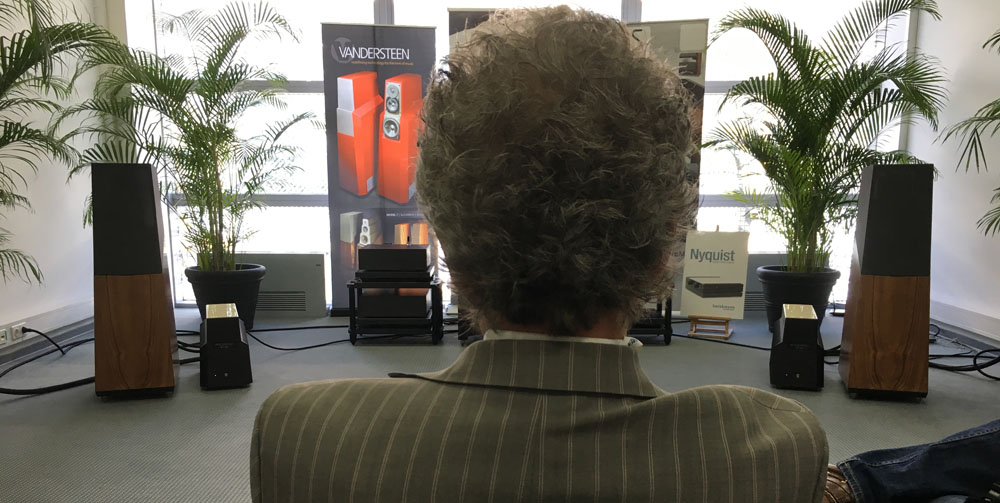
Vandersteen. Over the years I've been reading all interviews given by
Richard Vandersteen on first order crossovers and I was looking forward
to hearing his speakers for the very first time. On display was Model 5a
Carbon, featuring most of the technology from the top model, Model 7 mkII. Driving the front drivers was the new M7-HPA 600 watts amplifiers
(52 kUSD/pair) and my expectations were high. I've built speakers with
first order filters from time to time and I know what they can do - and
what they sometimes cannot. There's a price to every choice we make in
loudspeaker building. Richard Vandersteen soon realised that need for a
small, extremely broad-banded 4" driver to bridge the gap between lower
mid-driver and tweeter, hence his remarkable balsa-carbon composite cone
made in-house with final driver assembly by ScanSpeak/Videbæk, not far
from where I live. One thing I like about Vandersteen speakers - the
larger ones - is the use of a dedicated amp for the bass drivers, a
plate amp. I really don't get why so few manufacturers of larger speaker
systems don't use it more. In addition to a dedicated amp you can can
include equalisation, something most of us need not having a dedicated room for
hifi where speakers can be placed optimally. Getting some serious watts
for the bass come cheap these days and we can spend our money on some
better sounding low-watt amp for mid and tweeter.
Now, I was in all three days to hear the Model 5a because I was kind of
puzzled by the sound. The bass was taut and dry from the two 12"
compound drivers. Couldn't be better for the size. The midrange is to
die for with a level of transparency and presence that few can manage.
It makes music alive and you want to hear more. The upper mid/treble is
where I'm a bit confused as there was a minor graininess simply not up
to the level of other high-end speakers in this price range. After the first listen I
thought Vandersteen's record collection was a bit worn from probably
many displays and the covers looked like they'd seen better days. Day 2
and 3 didn't change my perception of some smear in the treble range
despite different source materials. I had a hard time believing the
amps, CD players or any other components should be responsible for this.
It just sounded like bad capacitors, standard PP, in the treble crossover without any idea
of what was used here. Strange.. The thing is that next door was a pair
of WA Alexias and despite a totally different concept of having a
ScanSpeak tweeter doing it all down to 1.5 kHz and with a high-order
filter, these threw a crystal clear treble, outperforming the Model 5As
in that respect, but more on the Alexias later.
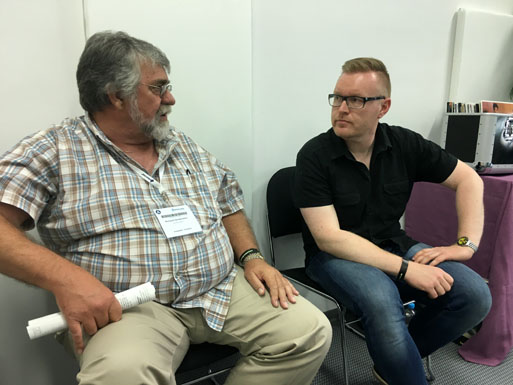
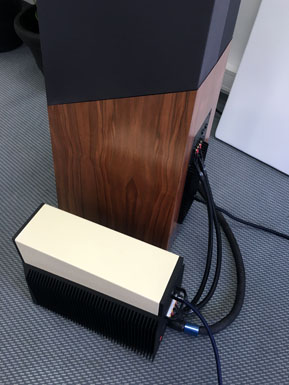
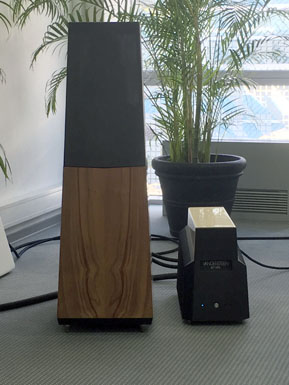
Richard Vandersteen, the King of 1st Order Filters, to the left.
Being at home I dug into the Vandersteen 5a and I think this may be part of the problem:
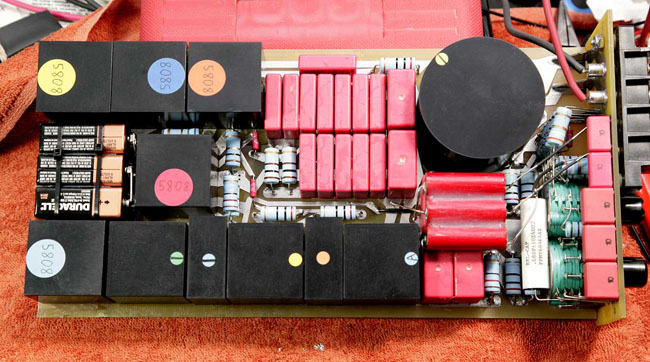
If this is really the 5a crossover, I better understand the lack of
ultimate resolution in upper mid and treble range.
Mediocre VIMA caps and polarising caps with batteries is 80'ies woodoo.
Doesn't make a super-cap from standard PP.
Go listen to Kawero/Kondo and a lot of other brands and you will
know that good crossover components is vital to reach the very - very - top end.
Sorry to say, Vandersteen's 5a didn't. At his price point we should
expect the very best.
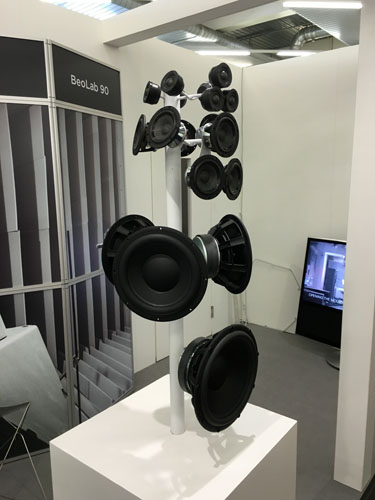
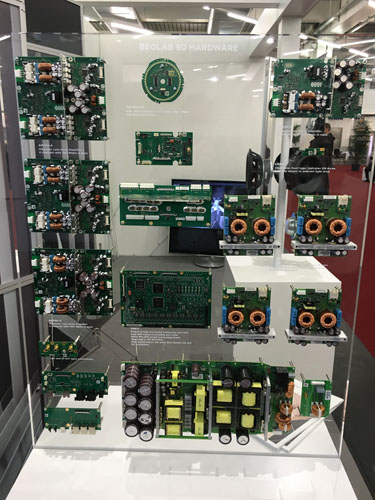
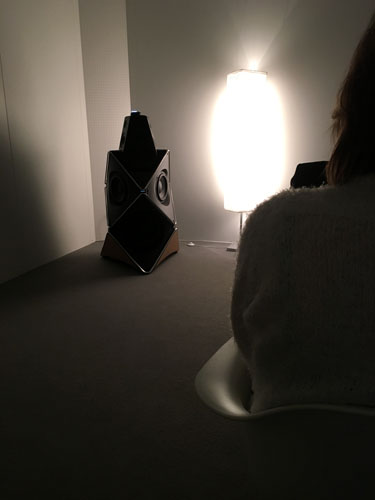
Actually the very first speaker I heard on the show was the new B&O Beolab 90. A remarkable speaker in every way, a fantastic achievement by the B&O engineers. Right next door was a small stand by Audio Hungary playing small speakers made from SBA Satori drivers and a modest 5881 PP 20 wpc tube amp (image below, sorry for the lack of light). I went to hear both twice and the conclusion was the same. The tube amp and Satori construction simply played music like I think it should do. A sense of presence and engagement, a small scale system for real world small living rooms. I couldn't help wondering what another amp might have done to the 12Ms and tweeters of the Beolab 90. The tonal balance of the Beolab was perfect but the mid/treble could be found better in other places - and for a fraction of the cost of the Beolab.
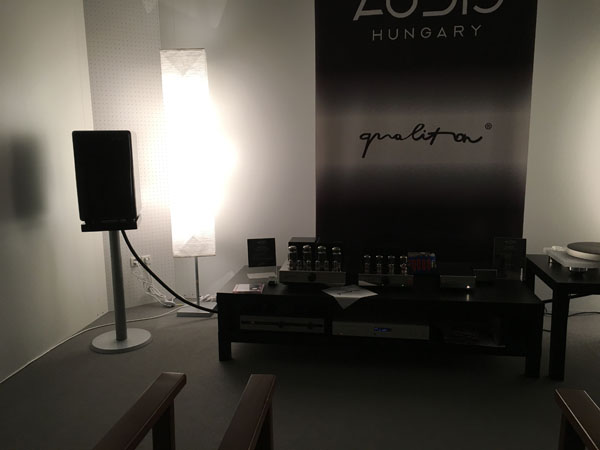
Well done Audio Hungary! Link to amp
here.
The Marantz TT-15S1 turntable with an MC cartridge (forgot to check), the RIAA, the A20i and some "homemade" speakers made terrific sound.
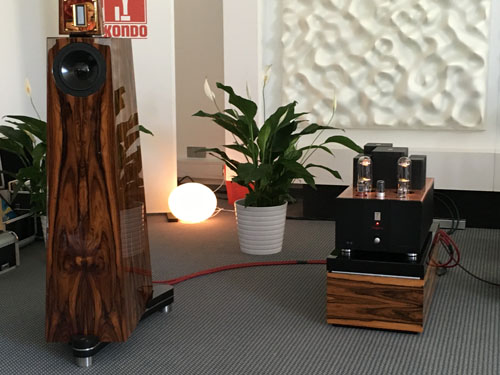
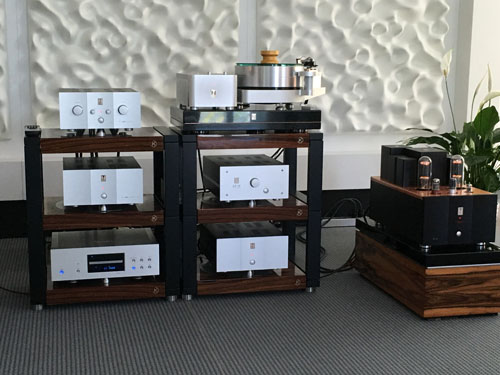
Above Kawero speakers driven by Kondo amps. Hmm..this stuff did sound really good! The speakers based on AudioTechnology drivers and a ribbon for treble threw a spectacular soundstage. Which counted the most, amps or speakers? Hard to tell, probably some people who knows how to put things together, but gut feeling tells the amps plays quite a significant role here. Actually the speakers feature the same drivers as my ATS4, only the middriver uses an 8" passive driver. Only thing I could point to would be a minor problem in how the middriver blends with the ribbon tweeter. It's always a problem mating drivers of such different principles. The thing is I could hear the tweeter - and we shouldn't! We should hear treble - and not be distracted by something else.
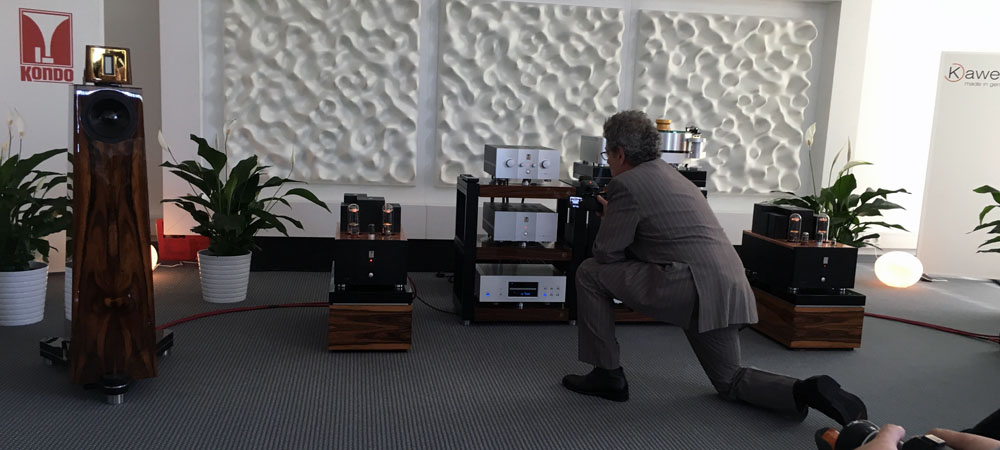
Who is this nosy video guy always getting in front of me?
Below a small selection of turntables. Turntables were to be found in abundance. Think about it, 20 years ago turntables were dead and today it is used extensively for demonstrations alongside digital storage. Remarkable.
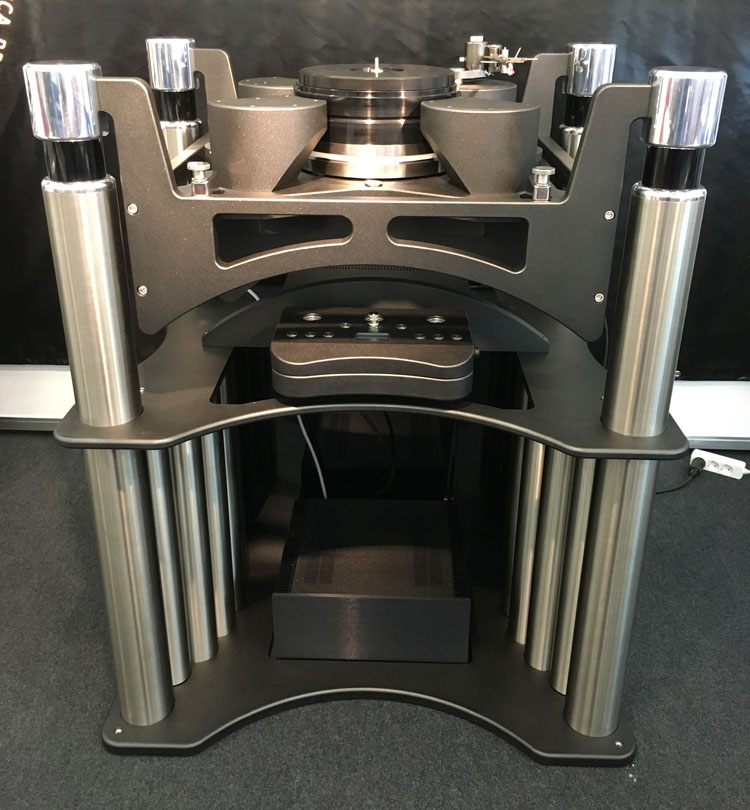
Not sure what my wife would think of this! Yes, there's a turntable at
the upper mid.
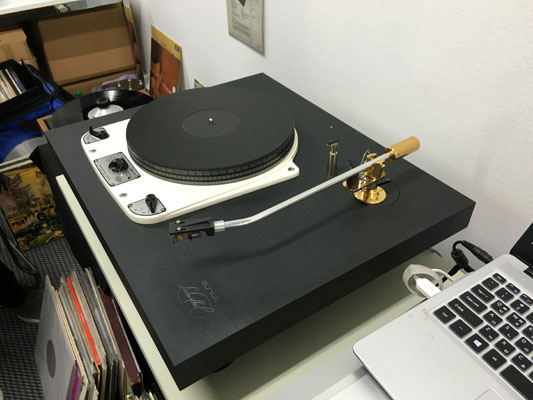
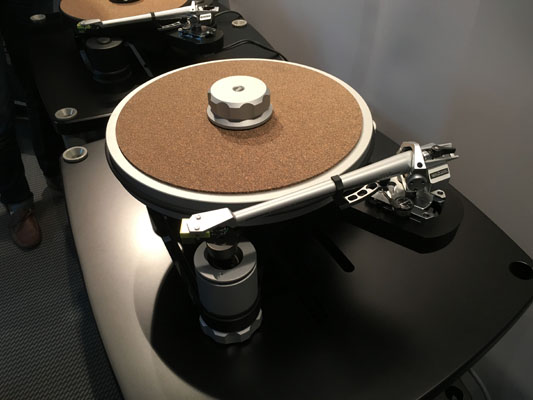
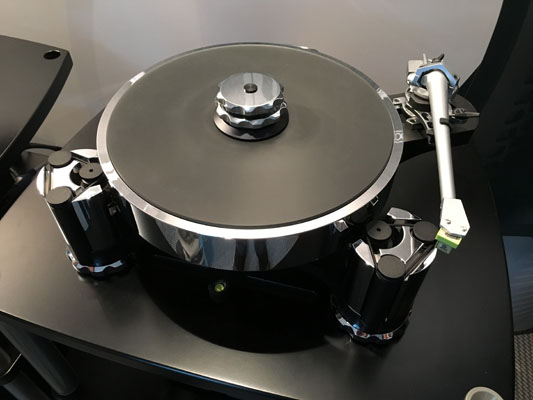
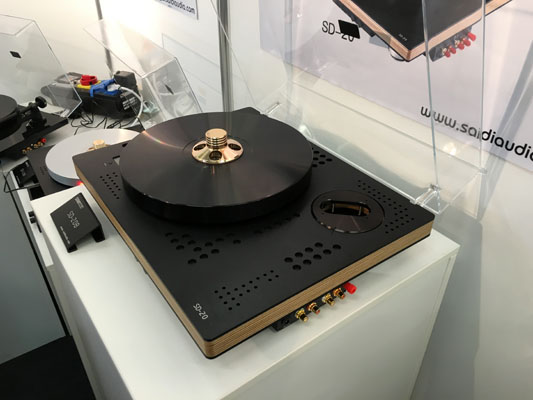
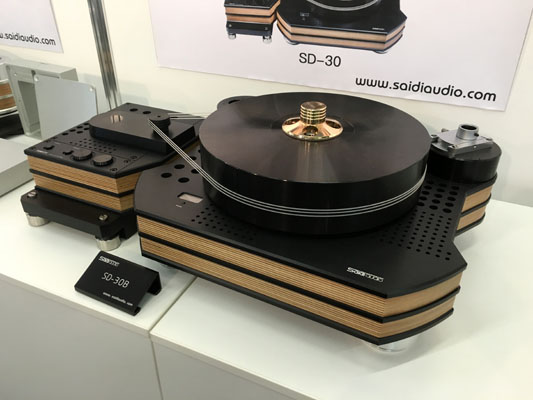
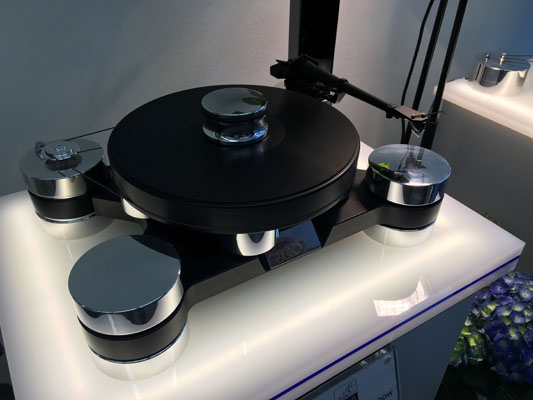
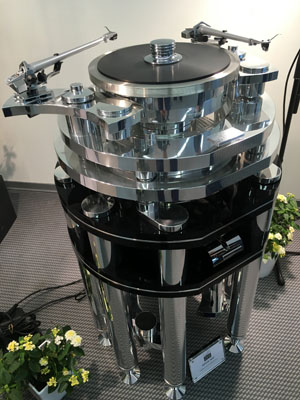
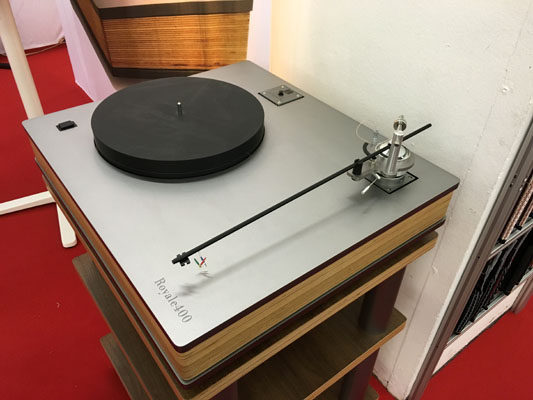
Right: The longest arm I've ever seen, I guess 14-15 inches, longer than
my 12" Moerch.

Listening to copies of master tape via headphones is quite a treat!
Speaking of turntables I had the pleasure of visiting the EAR demonstration of recorded music stored on 16 bit CD, 45 rpm vinyl and master tape! Same piece of music from three different sources. The Denon reel-to-reel electronics was rebuilt by Tim Paravicini - obviously.
A pair of 509 mono-blocks were driving a pair of Rockport speakers and they had a hard time getting a firm grip of the bass drivers, but midrange treble was as smooth and delicate as can be. Maybe the room sucked out the bass, but it wasn't optimal.
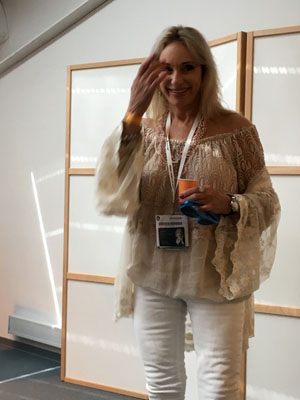
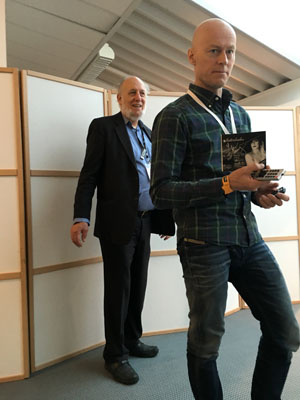
Singer Lyn Stanley was present and promoted her new recording,
Interludes, recorded with the very same microphone used by Frank
Sinatra. Actually Lyn Stanley was a bit of a pain singing along the demo
where we were sitting trying to hear the difference between the three
media. Well, we could hardly ask her to shut up, but I guess a few of us
were thinking the same thing. Quite a I'm-soo-much-here diva..
I'm sure the vinyl was played a little louder than the CD, which is a
major flaw in a demo, and the difference was significant. Less so
between 45 rpm vinyl and tape although it has to be said the
reel-to-reel did sound really, really good.
Floor-standers and stand-mounts:
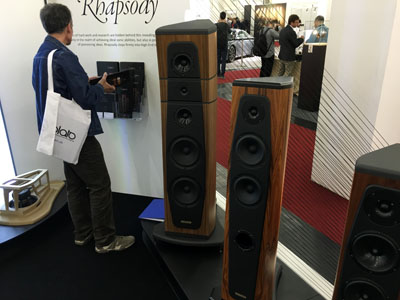
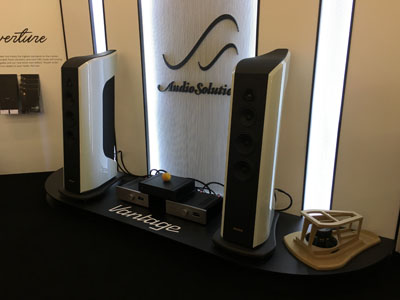
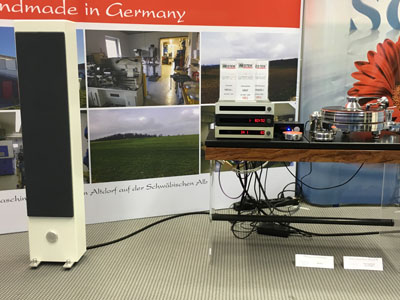
Upper right: Not sure of the speakers used at the Restek stand, but darn
good sound.
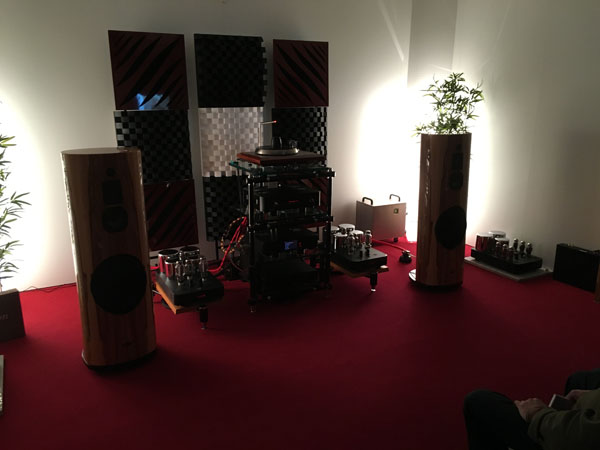
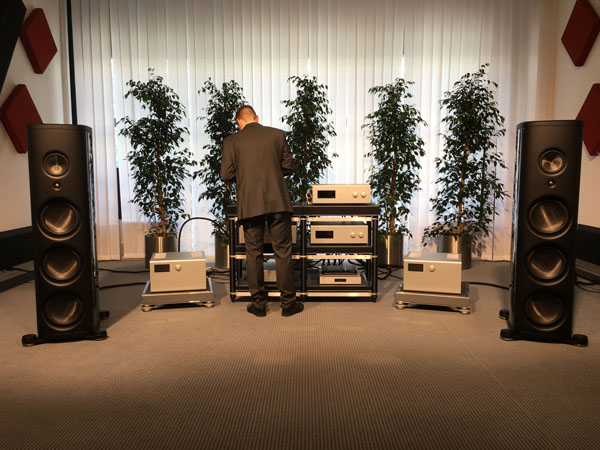
Ayon speakers driven by Ayon tube amps made terrific sound although the
transition from the large bass driver to the small 5" midrange was
noticeable. Not so from Magico, excellent integration of all drivers. Two
great floorstanders. I've heard Magico on several occasions and they
never fail.
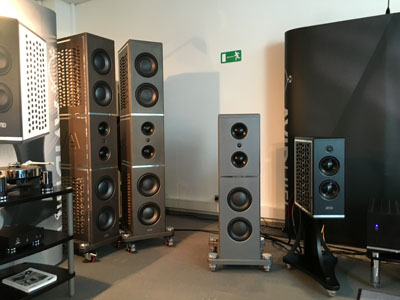
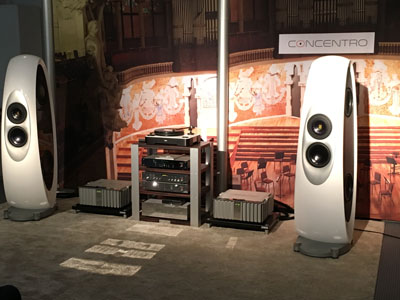
Just a few words in source materials. I heard a lot of great jazz and a
little classical music, but the majority of exhibitors played some
pling-plong bongo drum shit on the show. Purely synthetic sound that
will make any system sound good, but tells very little of how it handles
male and female vocals, how they manage massed strings and a grand piano, etc. Please,
some music made by humans!
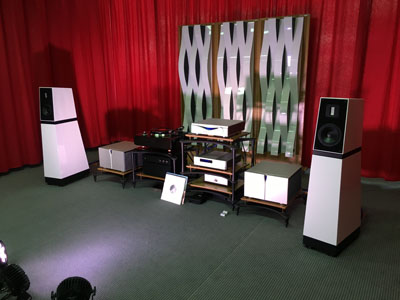
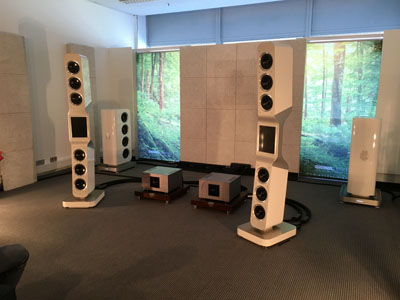
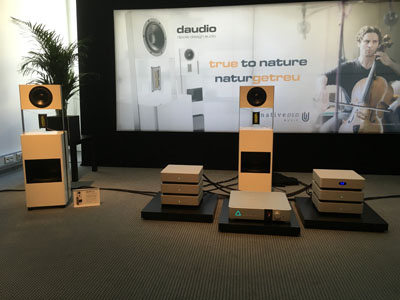
Upper right: Dutch company daudio showing some dipole speakers
with a very nice sound. Quite a challenge getting drivers on such
small baffle providing an even frequency response - but it did sound
smooth and easy. SEAS subs in PP configuration, AudioTechnology 18H52
under-hung middriver and Mundorf (?) air-motion tweeter.
Generally I heard decent sound from a vast amount of floorstanders and I
won't (can't remember) all, but Veritas disappointed from poor mid-ribbon integration.
In the middle above some skinny runts with some panel type driver handling mid
and treble - not good. Another speaker that disappointed was a larger floorstander from Raidho:
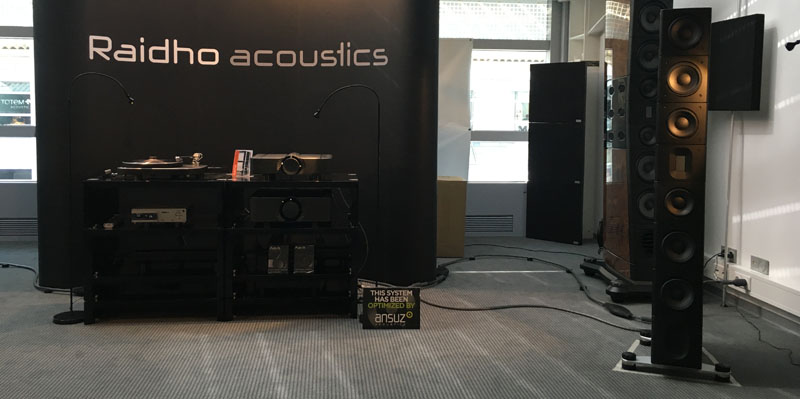
All of the drivers used appeared to be very well enginered, but the
tuning made a tizzy upper-mid/treble. Michael Borresen explained the
motor system of the middriver and it looks like the most perfect driver
in the world - and probably is. Right after this demo I heard a tiny d'Appolito (OBX-RW)
by Kevin Scott from Living voice - and I heard music. This 30+ year old
paper cone driver driven - again - from some Kondo amps - had qualities
hard to rival. Which shows we can have the best of drivers, but in the
end mating drivers, designing the cabinet and making a proper crossover
can be more important. I know the Vifa C17 drivers very well and made
four constructions some years ago. Throw a single coil at the C17 and it
starts playing music. From a 2016 engineering perspective there is
almost everything wrong with the C17 driver, yet the choice of cone,
dust cap, spider, foam surround, etc., produces one the easiest drivers
ever made when it comes to crossover construction and overall voicing.
And Kevin appear to be a master of voicing a speaker. More Living Voice
later on the Olympia speakers. I know that some will say I miss the
colouration of C17 drivers compared to the Raidho speakers, but it's
just not as simple as that. You can have technically outdated drivers,
but if you don't push them too hard you don't have cone break-up,
compression, etc., and they sound just wonderful. The OBXs don't play
deep bass - not all all, but you don't miss it much. Those Kondo
amps....I'm afraid not many people will really hear what the OBXs can
really do.
OBX speakers, image not from show.
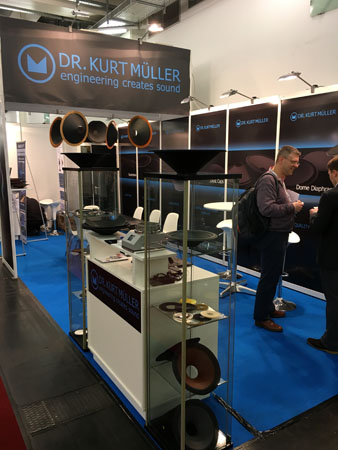
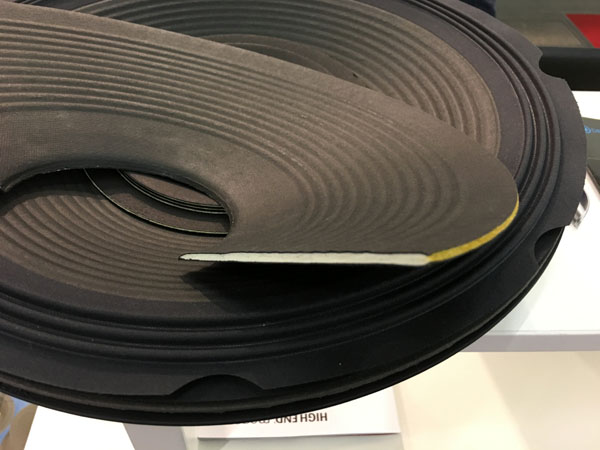
Cone materials from Kurt Müller, Germany. To the right some foam
sandwich cones - like the ones used in by ATS4 10" bass.
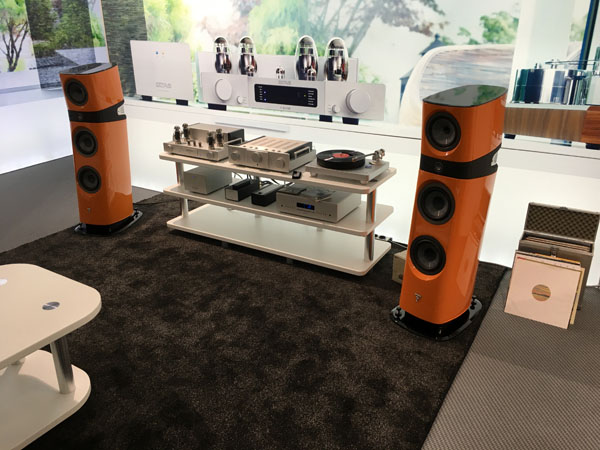
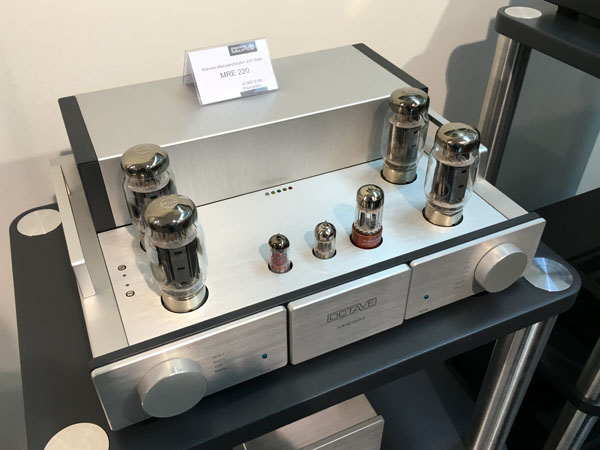
German Octave tube amps and French Focal had put their skills together -
and made some terrific sound.
Pity these tube amps are so expensive.
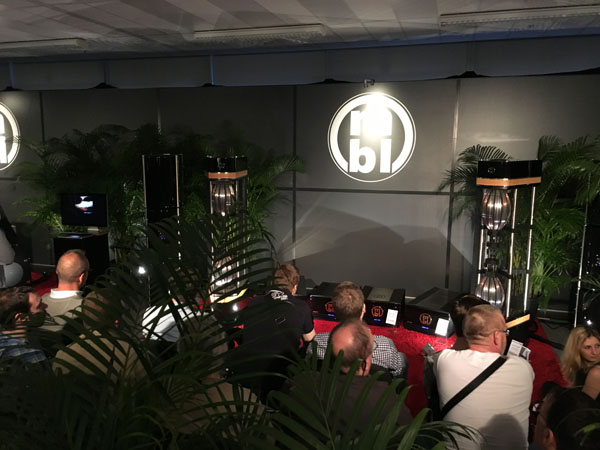
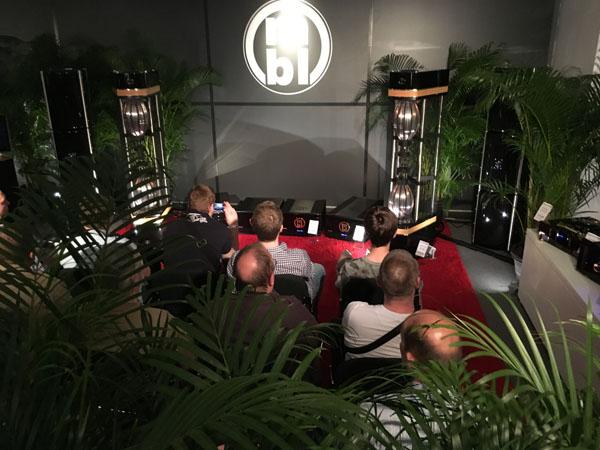
MBL, the most strange looking speakers on show. From what I could hear
through the jungle, some great sound.
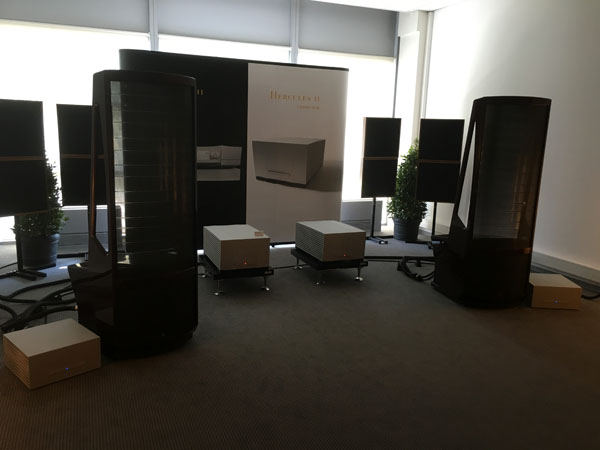
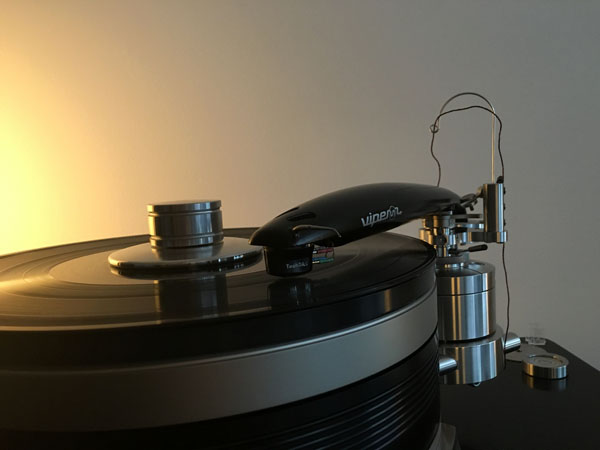
Martin Logan displayed their largest system - and well, makes you kind
of forget about building speakers at all.
The hot spot was mostly gone and I honestly couldn't point to anything
where these speakers fell short.
The great sound came from this
Continuum Obsidian deck with its Viper tonearm carrying a
TechDAS cartridge.
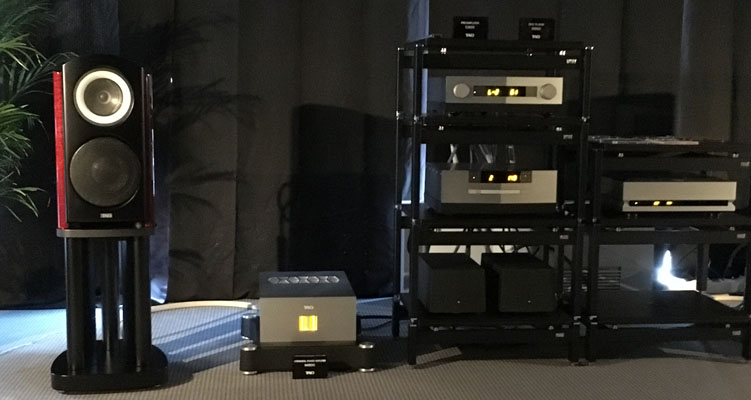
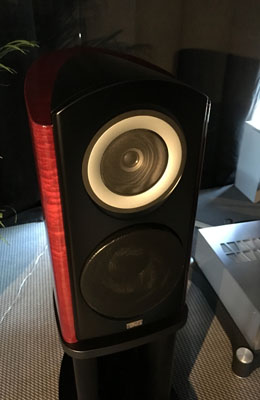
TAD. To put it very simple: Every studio producer should have a pair - and we might get better
recordings.
Excellent sound from the beryllium coax mid-tweeter driver and firm bass
too. These guys know what they're doing.
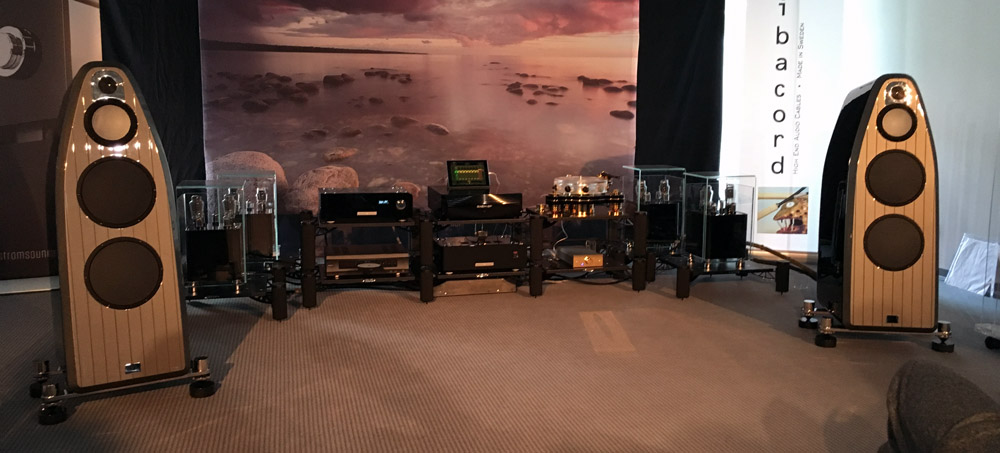
Marten Coltrane: Hmm....a lot of excellent qualities, but too bright for
my taste.
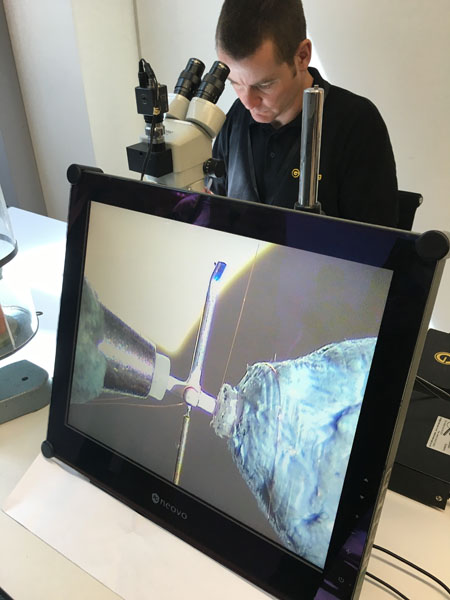
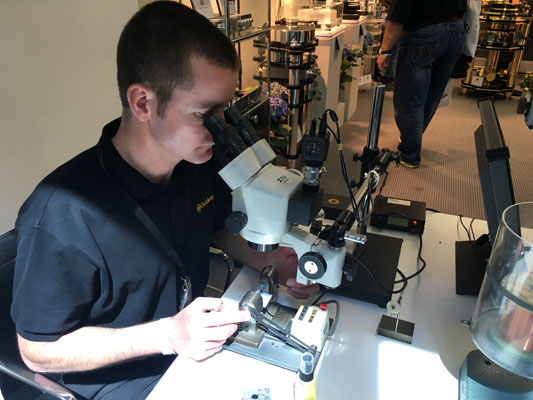
This very friendly English guy from Goldring demonstrated the art of
winding an MC cartridge. Fascinating!
We could follow the process from the microscope image projected onto a
screen.
It takes a sturdy hand winding MC coils with people asking questions all
the time.
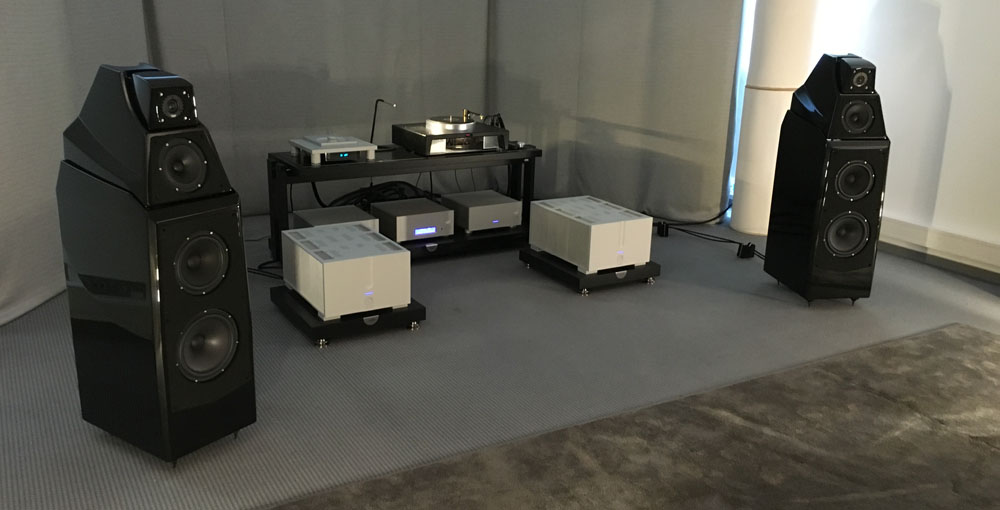
I obviously went to hear the WA Alexia speakers having used the basic
design principle in my ATS4/NEXT4/DISC4/Illuminator-5 speakers, although
I choose to place the upper bass driver in a separate closed cabinet to
enhance bass punch.
Driven by some half-pallet sized Greek Ypsilon mono-blocks I have to say these
speakers made some of the best sounds I heard on the show. No hint of
upper-mid/treble aggressiveness - no sign of even the slightest overload
of the tweeter working all the way down to 1.5 kHz. Delicate midrange
and an overall driver integration as an example to follow. Impressive. I see
(hear) the point why Dave Wilson picked the softdome he did and not just
any new fancy hard-dome. This just works.
I've
tried finding the mono-blocks on the
Ypsilon
website* but these must be new and not yet to appear on display. News
section's latest update is from 2014 - seems Ypsilon spends time in
other places. I have a suspicion the Ypsilon amps played a significant
role in the overall effortless presentation - and the Alexias were up to
the task. I couldn't point to any single parametre where these speakers
had trouble. Do these Ypsilons have a tube input stage? The Aelius does,
but these look different.
*: Check facebook here for details:
https://www.facebook.com/ypsilonaudio/?fref=ts (400 wpc, no wonder
they had good control of the ScanSpeak 26W bass drivers) - and yes,
tubed input.
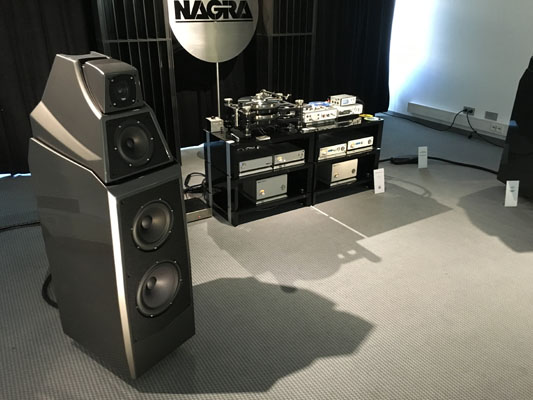
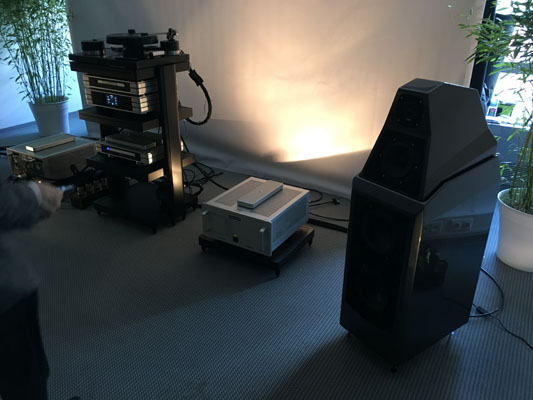
In another setting the Alexias were driven by some less obtrusive
mono-blocks from Nagra - and the result was the same. If you have some
50 kUSD for speakers, go for it. Here in Denmark they would something
like 80,000 USD, believe it or not (VAT, etc.). These Nagra Classics are
class AB amps with some 10 watts in class A. Whatever, they sounded
great.
Latest incarnation of WATT/Puppy speakers (right image above) driven by
Audio Research amps were for some reason a disappointment. Featuring the
same mid and tweeter you would expect a quite similar soundstage with a
little less bass impact. Not sure, maybe the gear, the room or some
other things - but not even close to the Alexias.
I do believe both Alexias' great sound was not least due to the
excellent amplifiers driving them. This was truly high-end as should be
- seriously expensive, but you get something for the money that you may
not from cheaper systems.
HORNS
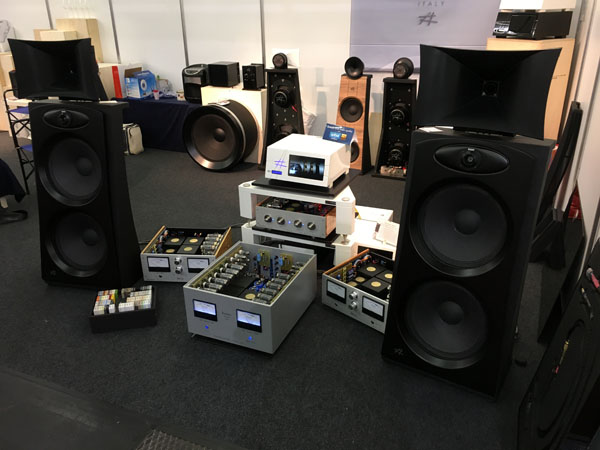
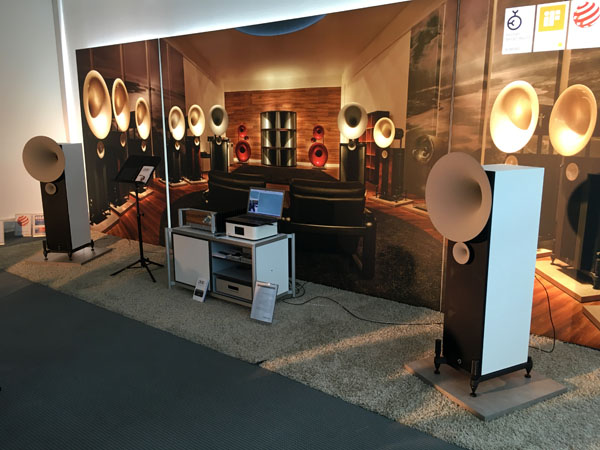
Upper left: Just passing by and not sure of the brand, but sound was
awful! Upper right: Avantgarde horn system, very good sound indeed,
still, no doubt we were listening to horns.
I'm not biased against horns, front loaded horns that is, but from my
own experience, making an integrated whole of compression drivers and
direct radiators is quite a challenge. I made a custom crossover this
winter (15/16) from 18"+12"+comp/horn+horn-tweeter, and I was pleased
with the result. Former experiments included 15"+lip-horn (500 Hz) +
tweeter and I never got male voices right. Crossing over at 500 Hz is
trouble, serious trouble, on particularly male vocals. The sound from a
direct firing 15" and a lip-horn is very different, and making
a perfect blend is almost impossible. People are so taken by the
transient speed and I fully acknowledge the quality, but direct
radiators - to my ears - make a better presentation of something we all
know so well, the human voice. Very few horn systems can do this.
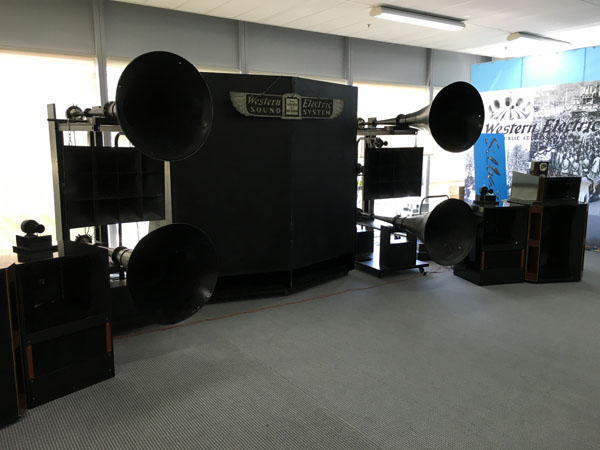
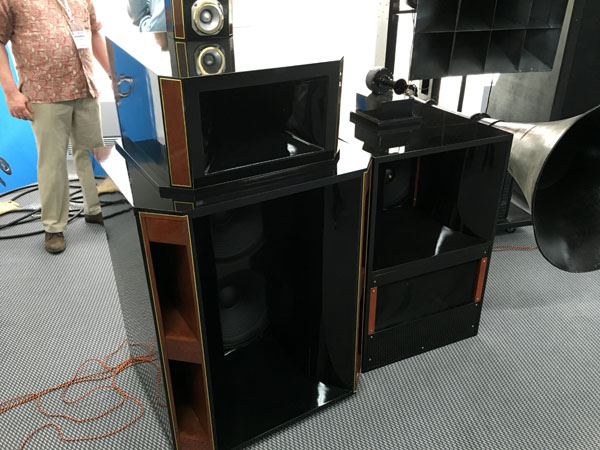
The Japanese people bringing these horns could take an article on its own.
Western sound from 1924 - amazing! Upper right, a 3-way system
delivering some great sound too. Visit
www.gip-laboratory.com and
read about all the amazing things these guys are doing. How on Earth do
you bring all these things to Munich and make a profit of it? Or maybe
somebody has a lot of money and do it for fun, who knows.
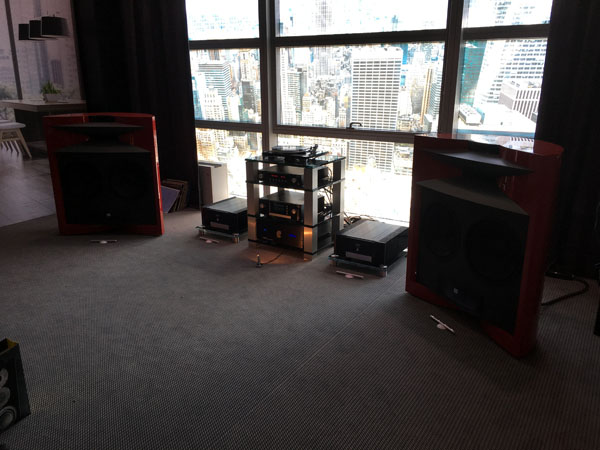
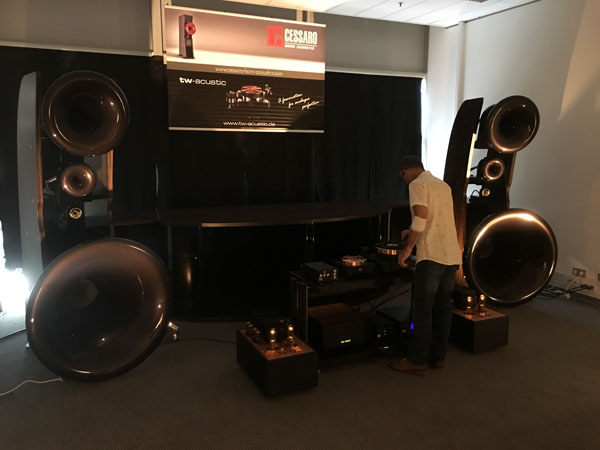
JBL to the left, disappointing. Harsh mid and treble. Cessaro to
the right, very good sound. I guess the horn shape reduce edge
diffraction making them sound less "horny".
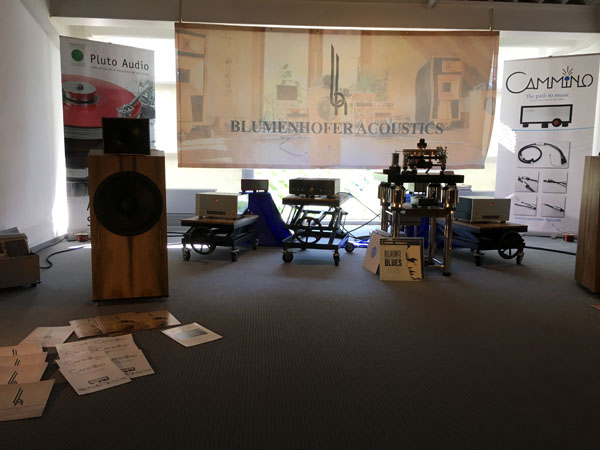
Blumenhofer from 15" + small upper-mid/treble horn. Really good tonal balance but truly two-way sound.
Too much of a jump from a 15" driver to a small horn at 800 Hz? My
guess.
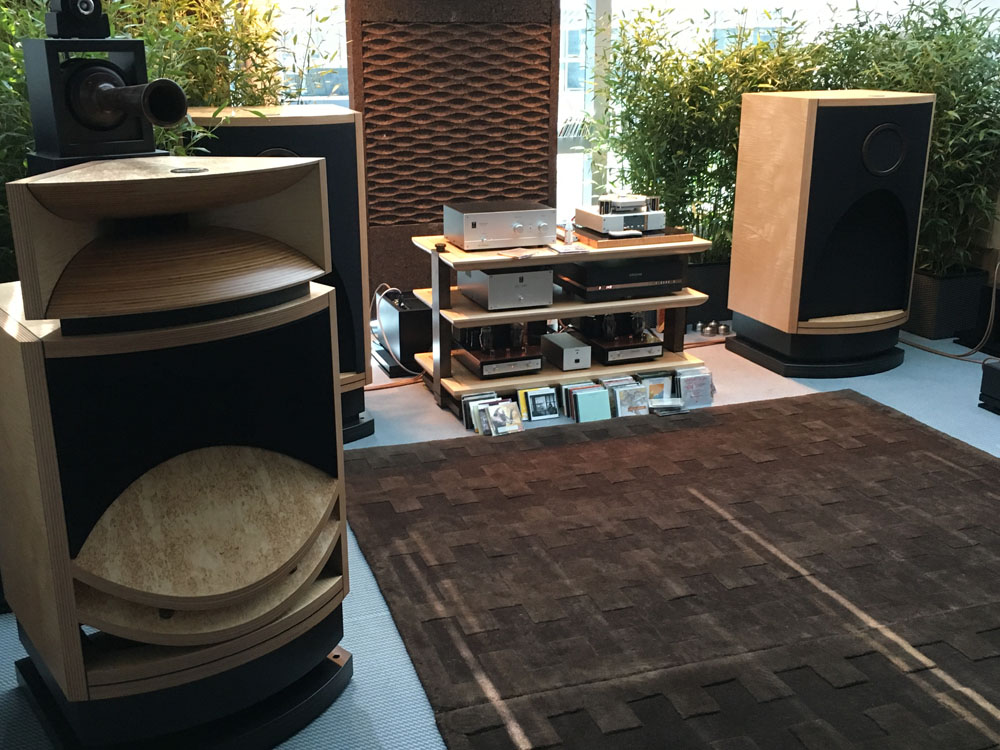
Now, Kevin Scott of Living Voice is a master of mating different horns
to make a truly integrated whole, The Vox Palladian, the "low-cost"
version of the Vox Olympian. The Vox Palladian in a very Scandinavian
design, beech plywood (not birch..). I like it, rather than the
voluptuous colonial style of the Olympian.
In this category
it's a true winner - and way above competitors. Best male vocals I've
heard from a horn system. Delicate upper mid and a seamless integration
of the three upper horns, never - ever - heard better. The ease of
presentation, the dynamics, the weightlessness of micro transients, I
could go on. It takes years* of fine-tuning to produce such a system. The
"cyclops" at the rear are 18" subwoofers in a vented box. A 90 k£
"low-cost" solution to the Palladian, Vox Basso...
*: Use google to dig into the past of Kevin Scott and you'll find out it
really has taken many years to reach this stage of excellence.
Many horn systems have been made before this distilled and matured
product came to life. The bass driver, mid compression driver and
mid-horn are available from the dealer of
Vitavox
products here. Whatever you want, it's ~3 k£/piece, so, 18 k£ for
bass unit and driver+horn if you want to try on your own. The wooden
horn is 3600 £/ea, a horrific price by any standard.
The bass cabs
appear to be modified Vitavox
Oracle cabinets. I think prices will keep DIY'ers well away from cloning the
Palladian ;-)
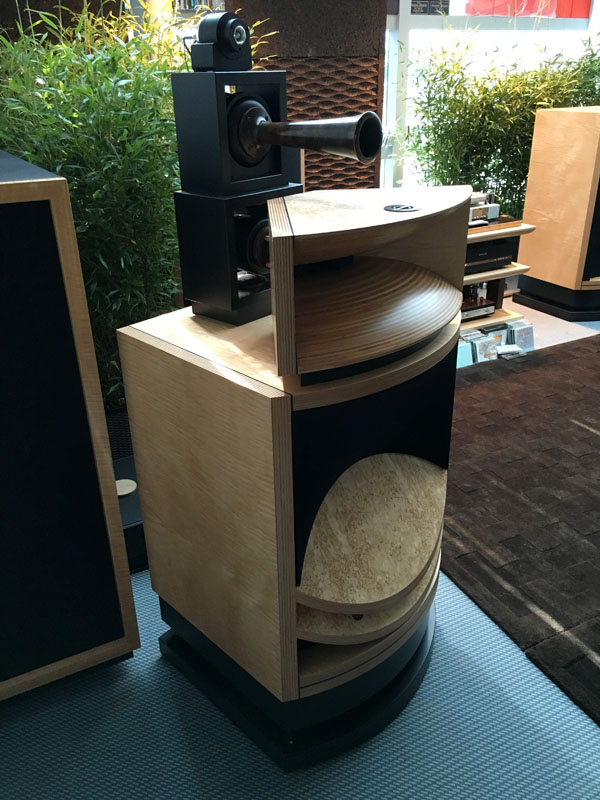
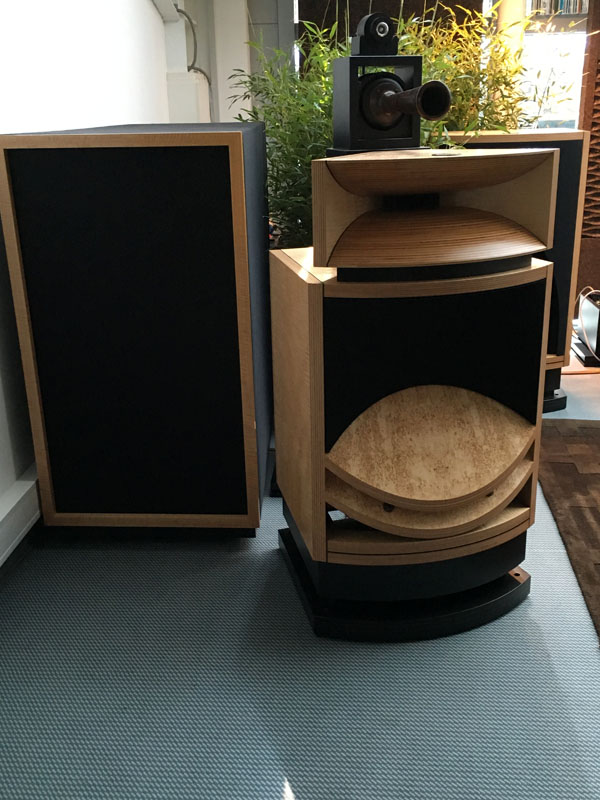
These speakers are not exactly small and ideally takes a dedicated room with proper dimensions and damping to make the best of it. I guess if you have 2+ mio Danish Kroner, you have the means to make another building for this system - including the cubic meter sized sub-woofers.
WHIZZER CONES
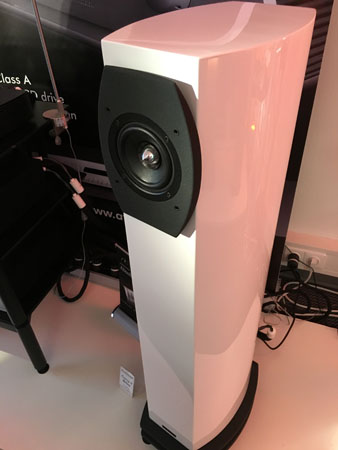
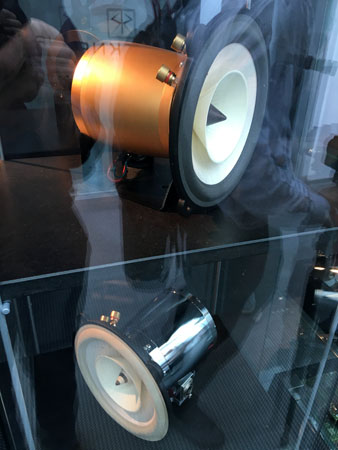
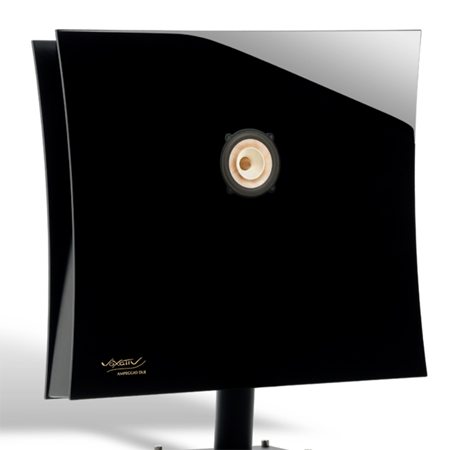
Left: Surprisingly good bass from a small 4"
driver, everything else quite bad!
Middle and right: Voxativ drivers and system on display (speaker image not from exhibition): Great bass and mid, treble tizzy.
I have no doubt that letting the Germans do the Lowther right and you
have a full-range driver as good as can be, but still..
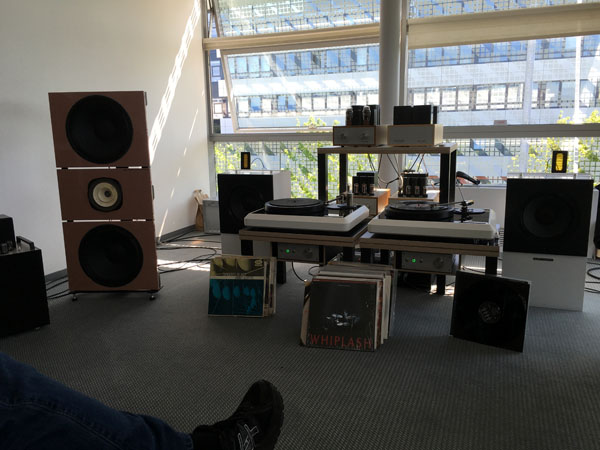
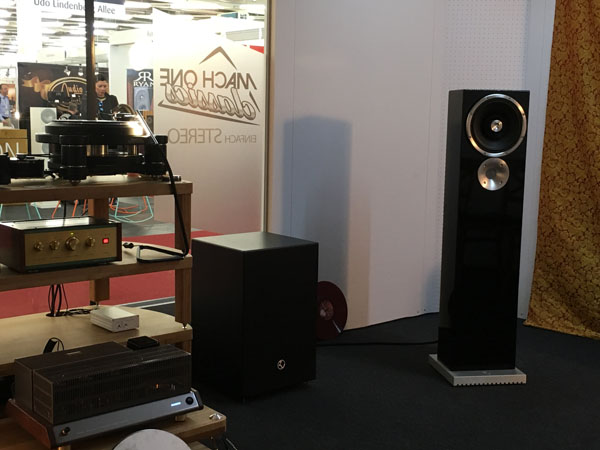
Left: Open baffle system with full-range driver for mid and treble. Tizzy treble again. Right: Zu loudspeaker from whizzer cone driver and compression driver fitted with waveguide. The speaker sounded plain awful. Close to worst sound on show. Speaking of bad, the Tannoy below made a good partner for the Zu speaker. Truly awful sound from the 12" coax.
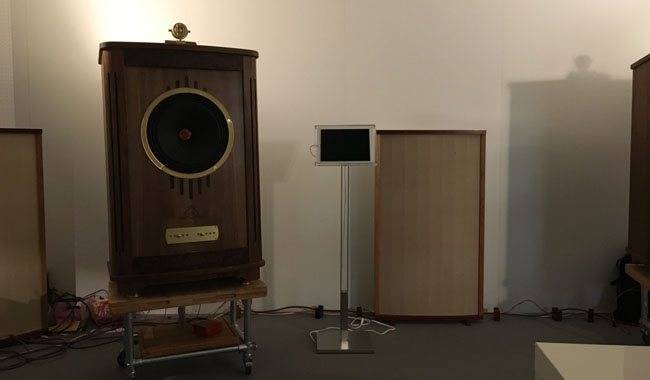
vdh
Van den Hul
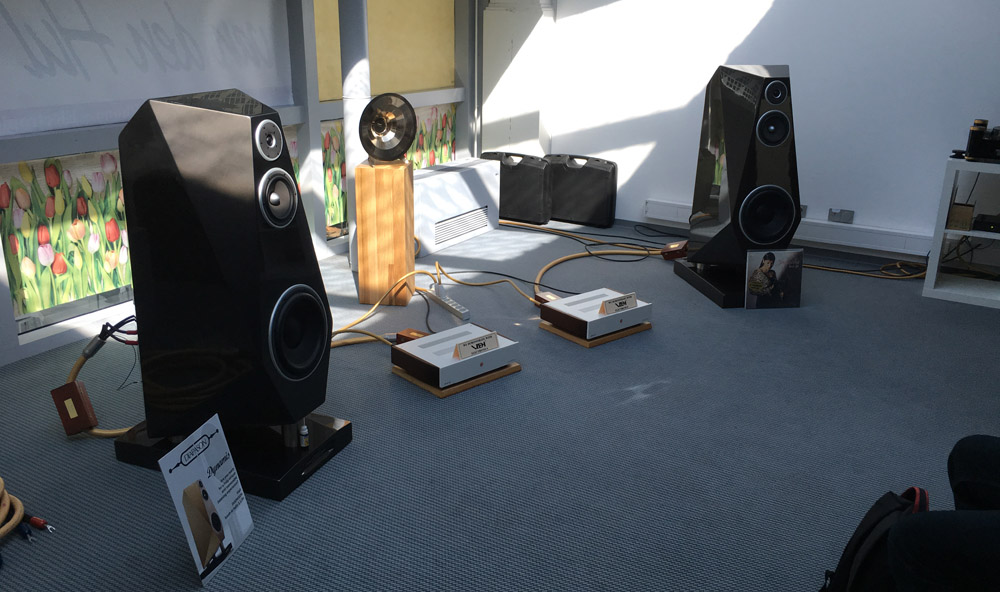
Using Van den Hul's Colibri cartridge and vdh Grail phono-stage, I obviously wanted to hear the Excalibur power amp and Emerald line stage. Not knowing the speakers (Diapason), but very much the drivers, I have to say there was a quality if ease and a way of "just sit down and listen - and listen long" about it. Had it not been for the price, I might go solid state all the way, but ~20 k€/pair is far beyond my budget. The Emerald alone is 13 k€..
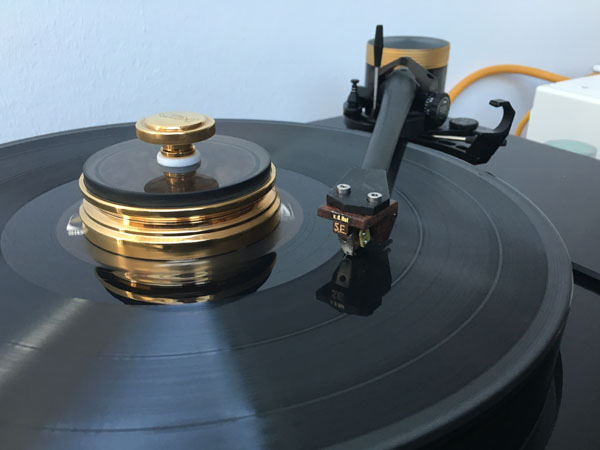
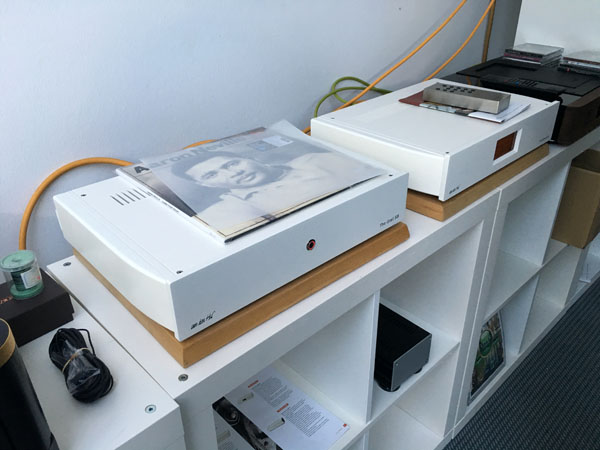
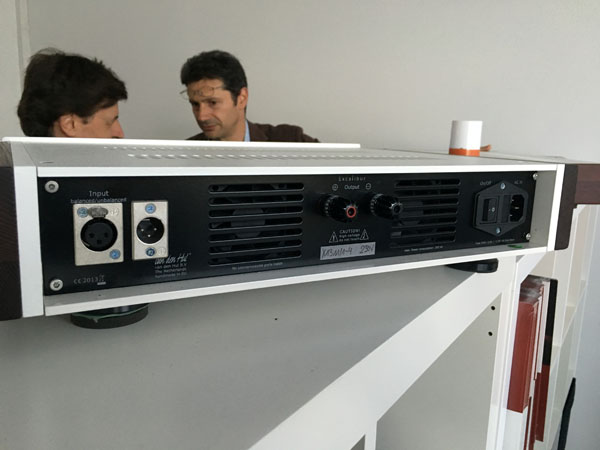
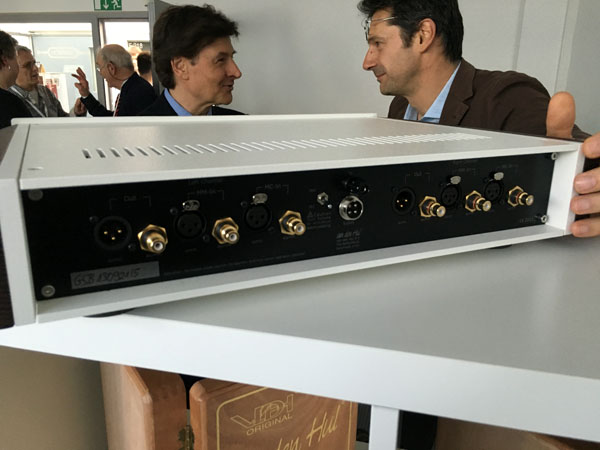
I visited the vdh room once more and found a very shy person telling about some resonator reducing unwanted resonances in the listening room.... How it manage to pick up bad and not good is quite a mystery. I was puzzled to find this in the same room as vdh..
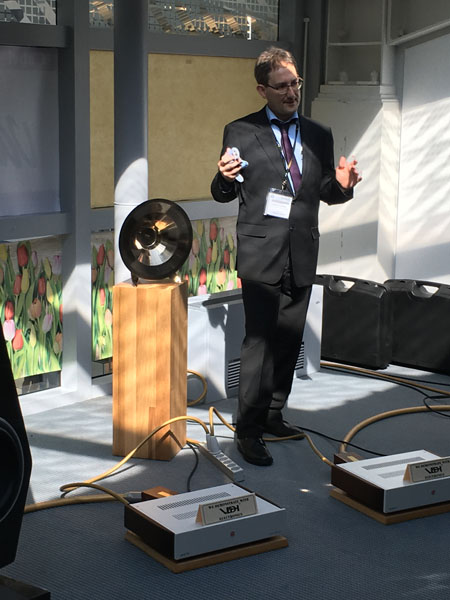
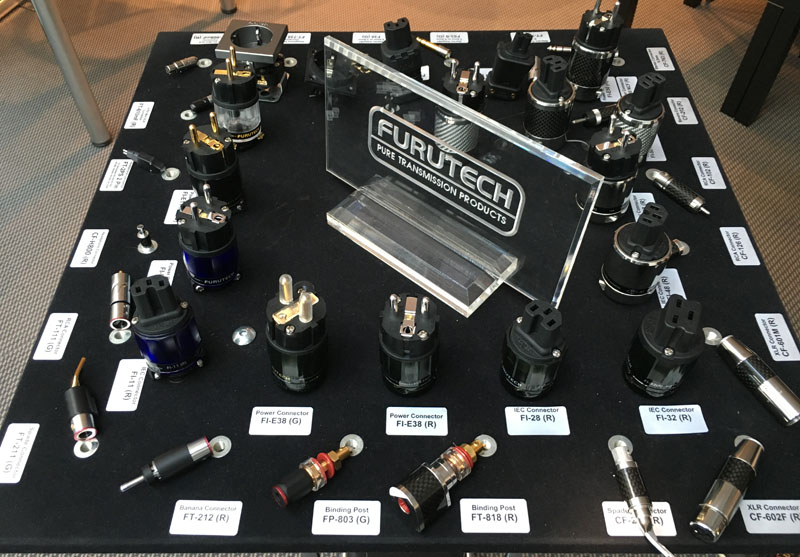
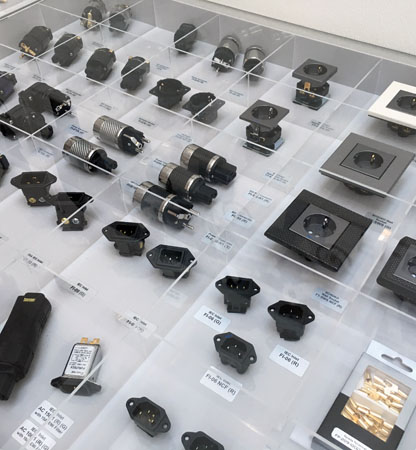
Furutech: Best plug-porn on the show!
Cone tweeters
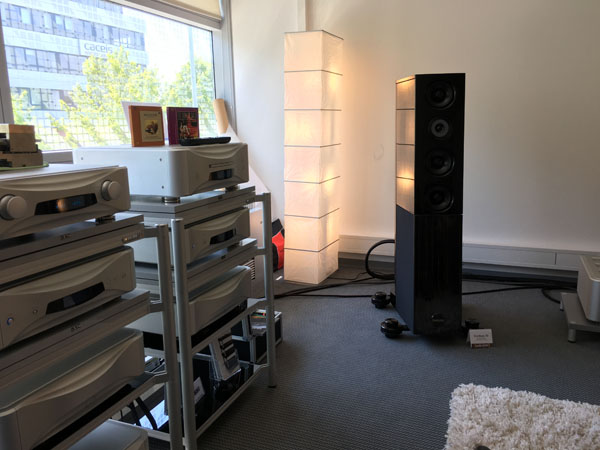
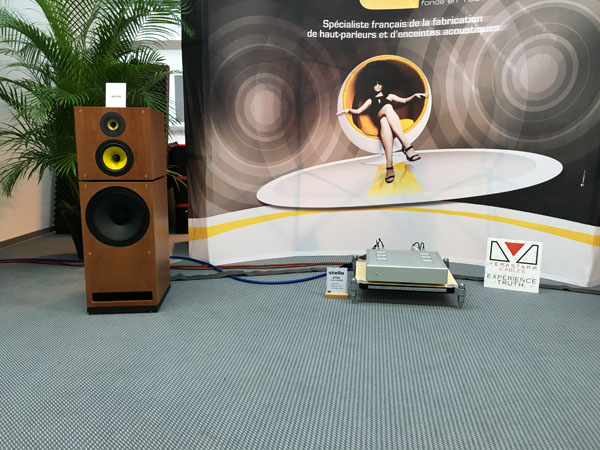
Two alternative tweeters I wanted to hear, the new cone tweeter from Audio Physic and the cone tweeter from the French company Davis Acoustics. The latter has been around for decades I think. Both tweeters appeared to perform really well, but better than domes? Hmm.... not sure. They have more membrane area and maybe lower distortion, but limited dispersion from the Davis was obvious. Not sure about the AP. The AP, by the way, had an excellent midrange and mid-tweeter integration very good too.
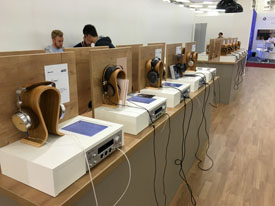
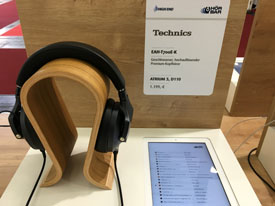
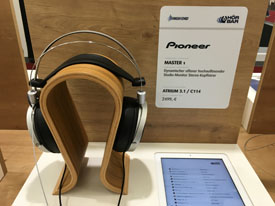
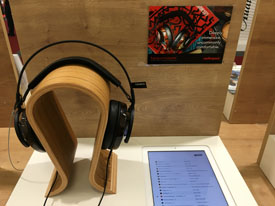
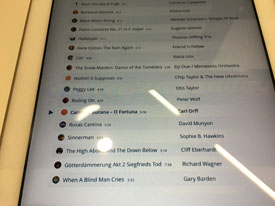
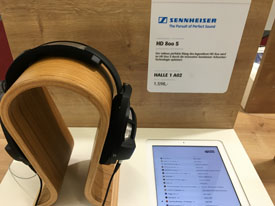
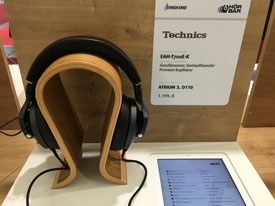
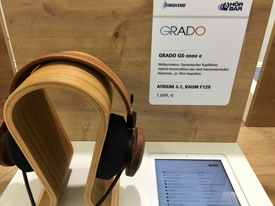
Swapping headphones listening to the same piece of music is fun - and
confusing. Quite some difference between top models of various brands.
I picked Carmina Burana/Carl Orff - some massed choral work and the
difference was huge between the top models. I liked the AudioQuest
Nighthawk and it wasn't the most expensive. Every time I try out
headphones I want a pair - but I know I won't be using them - so I
don't.
I have images for another "meter" of reviews - but better stop here. I'll be back in Munich some day.
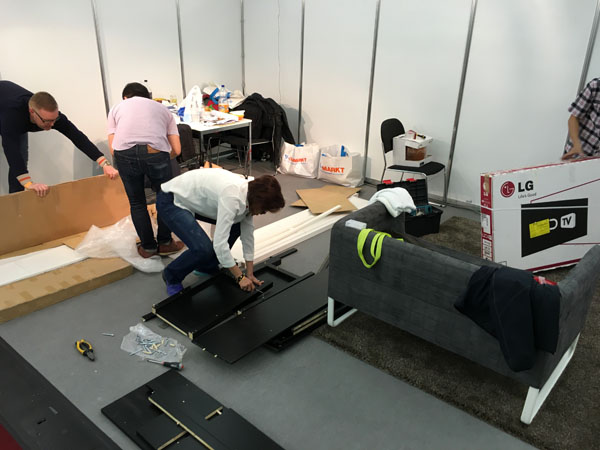

Time to wrap up and get home. Some of these guys looked quite tired, no
wonder. Thanks for a great show!